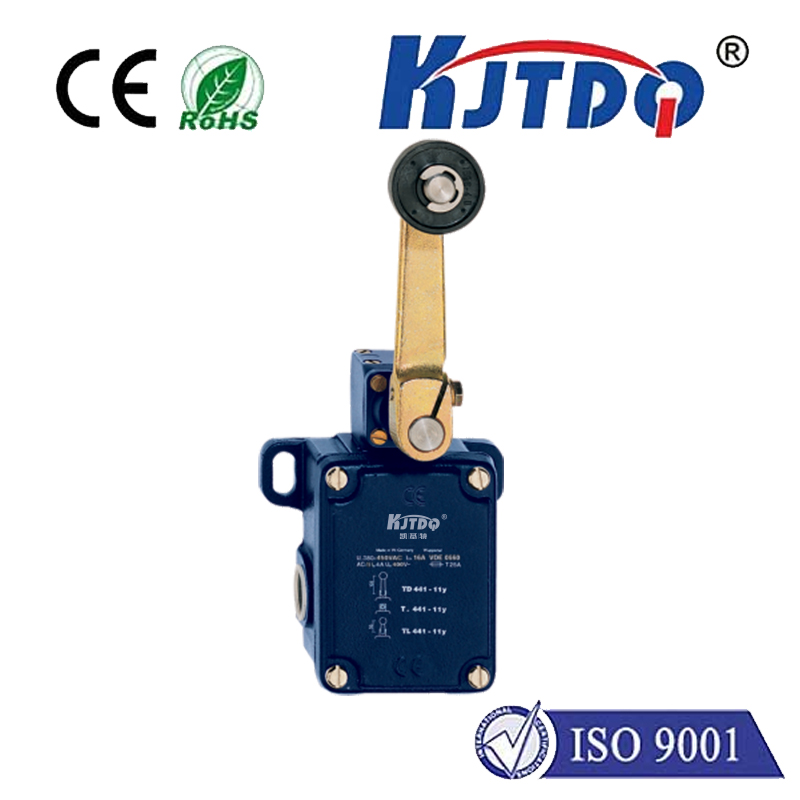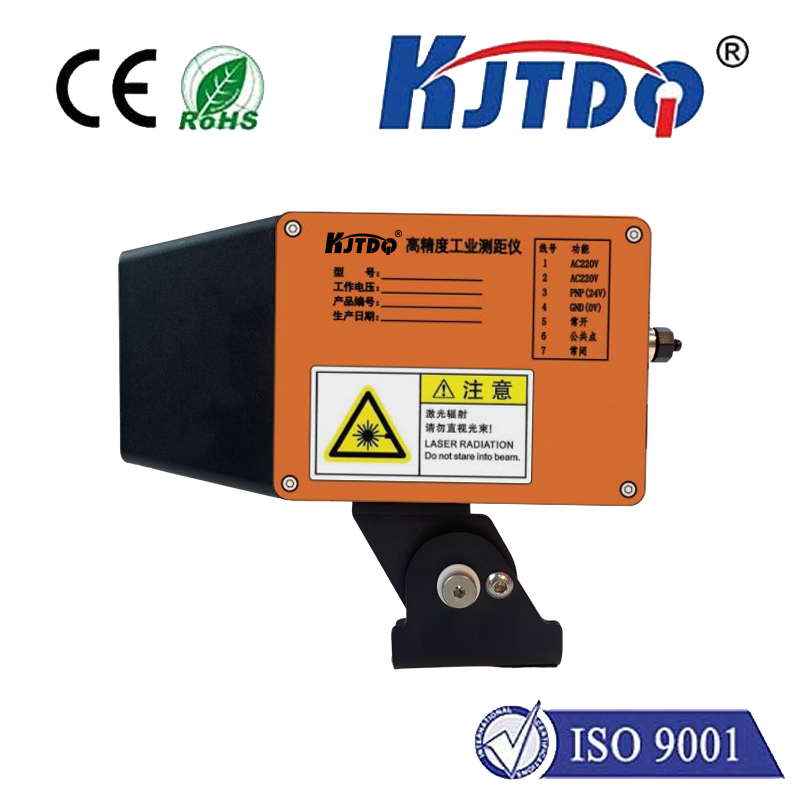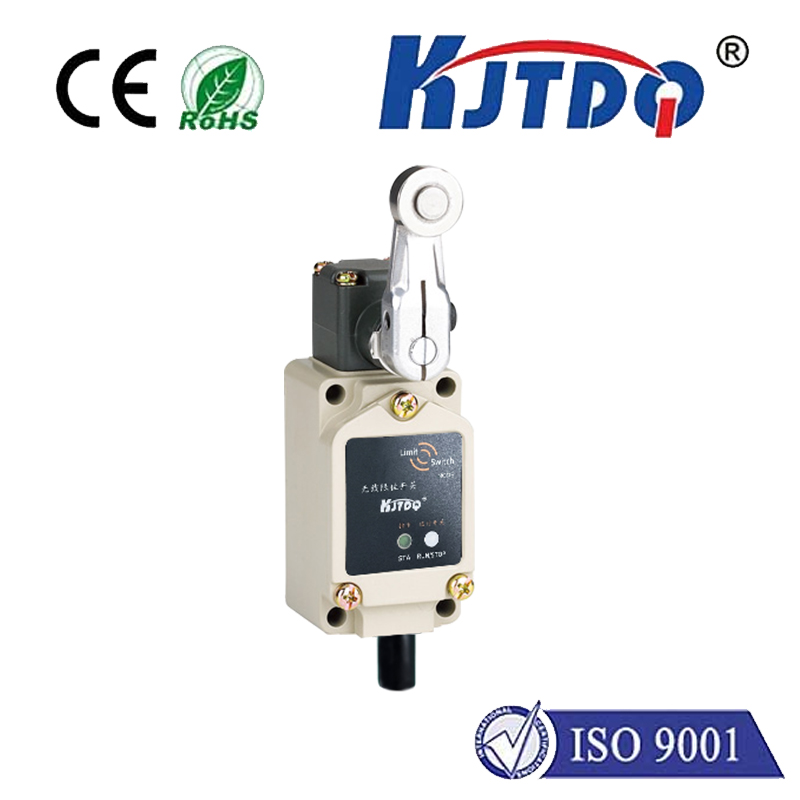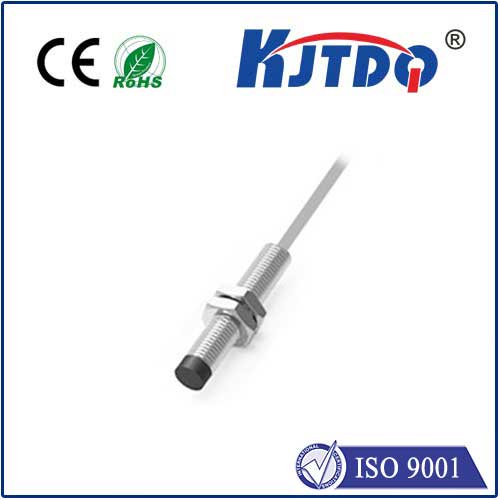3 wire inductive proximity sensor switch
- time:2025-09-08 02:26:41
- Click:0
Unlocking Efficiency: Your Complete Guide to 3-Wire Inductive Proximity Sensor Switches
Ever watched an automated assembly line humming along, precisely positioning metal components, counting parts, or detecting the end of travel – all without physical touch? Chances are, 3-wire inductive proximity sensors are the silent workhorses behind the scenes. These incredibly reliable electronic switches are fundamental building blocks in modern industrial control systems, offering unparalleled non-contact detection of metallic objects. Understanding their operation and advantages is key to optimizing automation reliability.
Understanding the Core Technology: Beyond Touch
Unlike mechanical limit switches requiring physical bumping or optical sensors needing clear lines of sight, inductive proximity sensors operate through the science of electromagnetism. At their heart lies a copper coil wound around a ferrite core. When energized with alternating current (AC), this coil generates a high-frequency oscillating electromagnetic field radiating from the sensor’s active face.
Here’s the magic: When a ferrous (iron-based) or non-ferrous (like aluminum, brass, copper) metal target enters this electromagnetic field, it disrupts the field’s flow. Specifically, eddy currents are induced within the target metal itself. These eddy currents draw energy from the sensor’s oscillating field, causing a measurable change within the sensor’s internal circuitry. This change is detected by the sensor’s electronics, which then triggers the switching action.
Demystifying the “3-Wire” Design
The “3-wire” designation is crucial for understanding how these sensors integrate into control systems:

- Brown Wire (+V): This is the positive power supply connection. Typically, these sensors operate on DC voltages like 10-30V DC, making them compatible with standard industrial PLCs and controllers.
- Blue Wire (0V / GND): This is the negative power supply return or ground connection.
- Black Wire: This is the switching output wire. This wire carries the signal indicating the presence or absence of the target. The state of this output is determined by the sensor type (NO/NC) and whether it’s an NPN or PNP transistor output.
The NPN vs. PNP Output Dilemma: Choosing Wisely
This is where the critical distinction lies for installation and compatibility:
- NPN (Sinking Output): When a metallic target is detected, the internal NPN transistor switches ON, effectively connecting the black output wire to the blue wire (0V). This “sinks” current from the load (like a PLC input) connected between the +V supply and the black wire. Think: “NPN provides a path to Negative.” They are commonly used with PLCs designed for sourcing inputs.
- PNP (Sourcing Output): When a metallic target is detected, the internal PNP transistor switches ON, effectively connecting the black output wire to the brown wire (+V). This “sources” current to the load connected between the black wire and the blue wire (0V). Think: “PNP provides a path to Positive.” They are commonly used with PLCs designed for sinking inputs.
NO vs. NC: Defining the Default State
Alongside NPN/PNP, understanding the normally open (NO) or normally closed (NC) configuration is vital:
- Normally Open (NO): In the absence of a detectable metal target near the sensor face, the output is OFF (open circuit). When a target enters the sensing range, the output switches ON.
- Normally Closed (NC): In the absence of a detectable metal target near the sensor face, the output is ON. When a target enters the sensing range, the output switches OFF.
Choosing NO or NC depends on safety requirements and the desired logic within the control system. For instance, an NC sensor might be used for a guard door safety circuit – the circuit is closed (safe) when the door is shut (no detection), and opens (trips safety) when the door opens (detection occurs).
Why Choose a 3-Wire Inductive Switch? Key Advantages
The widespread adoption of 3-wire inductive proximity sensors stems from compelling advantages over mechanical alternatives and other sensing technologies:
- Non-Contact Operation: Eliminates physical wear and tear, providing virtually infinite mechanical lifespan. Ideal for high-speed applications or delicate environments. No moving parts mean no mechanical failure.
- High Reliability & Long Service Life: Solid-state electronics combined with non-contact sensing make them incredibly robust and resistant to millions of switching cycles.
- High Switching Speeds: Capable of detecting objects moving at very high speeds, far exceeding the capabilities of mechanical switches.
- Insensitive to Contaminants: Unlike optical sensors, they perform well in environments with dust, dirt, oil, water, or vibration. Sealed housings (IP67/IP68/IP69K are common) offer excellent protection.
- Resistant to Harsh Environments: Can operate in demanding conditions including high temperatures, chemical exposure (depending on housing material), and washdown settings.
- Solid-State Output (Transistor): Provides a clean, bounce-free switching signal ideal for digital logic inputs on PLCs and controllers.
- Flexible Mounting: Flush, non-flush, and factor 1 mounting options provide versatility for various installation constraints. Shielded sensors allow flush mounting in metal without false triggering, while unshielded sensors offer slightly longer sensing ranges but require non-metallic surroundings near the face.
Where Are They Used? Diverse Applications
The robustness and reliability of 3-wire inductive proximity sensors see them deployed across countless industries:
- Machine Tooling & Automation: Position detection of tool holders, pallets, clamps; end-of-travel stops; part presence/absence verification in assembly lines; conveyer belt monitoring.
- Automotive Industry: Robotic welding position confirmation; part counting on lines; engine component assembly verification; fluid level detection in tanks (using a float with a metal target).
- Packaging Machinery: Detecting metal cans, caps, foil seals; ensuring case flap closure; positioning packaging materials.
- Material Handling: Monitoring fill levels in bins/hoppers (with a metal target on a float or paddle); conveyor jam detection; sorting metallic objects.
- Food & Beverage Processing: Reliable detection despite wet and dirty conditions (using stainless steel housings); monitoring filling station positions; verifying container presence.
- Printing & Converting: Web break detection (if metallic); registration mark detection (often on backing foil); counting metallic parts.
Installation Best Practices & Considerations
To maximize performance:
- Matching Input Type: Ensure the sensor’s NPN or PNP output matches the requirements of your PLC or controller input module. Connecting an NPN sensor to a sink/source input configured incorrectly will result in no signal.
- Load Compatibility: While the solid-state output is robust, ensure the connected load (especially lamps or relays) doesn’t exceed the sensor’s maximum switching current capacity. A small load resistor may sometimes be necessary.
- Sensing Range: Always refer to the sensor’s datasheet for the rated operating distance (Sn). Note that different metals (steel vs. aluminum vs. brass) have different effective sensing ranges (often specified with correction factors). Ensure the target approaches the sensor face correctly (typically perpendicular).
- Mounting: Confirm if the sensor is shielded or non-shielded and follow the manufacturer’s recommended clearance from surrounding metal. Ensure proper grounding via the blue wire.
- Environmental Protection: Select housing material (e.g., nickel-plated brass, stainless steel) and sealing rating (IP code) suitable for the environment (chemicals, washdown, temperature).
By harnessing the principles of electromagnetic induction, 3-wire inductive proximity sensor switches provide a robust, reliable, and versatile solution for countless position and presence detection tasks. Their non-contact nature, long life, and resilience in challenging conditions make them indispensable tools for engineers and technicians building efficient, dependable automated systems from factory floors to processing plants















